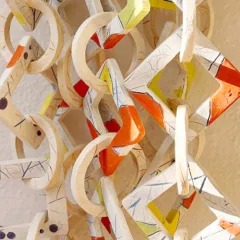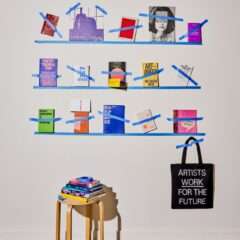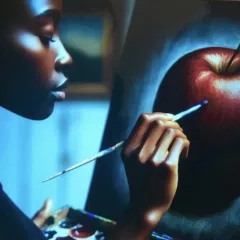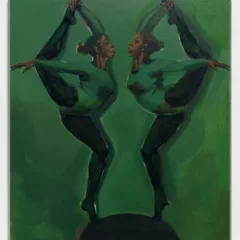Post by Andrea Kirsh
Our trusty correspondent Andrea Kirsh reports from Art Basel/Miami Beach, in four installments. Here’s the third.–r&l
Dec. 8
Back to the Beach
I began the day with a breakfast at the Delano Hotel on Miami Beach, hosted by AXA Art (the world’s largest art insurer) and NetJet, a sort of Philly_Car_Share for private jets, 300 of which they had flown into AB/MB. That tells you something about the socio-economics of the audience. It was a discussion about conservation, care of collections and dealing with art in a natural disaster.
Heather Becker of the Chicago Conservation Center discussed the triage and immediate treatment of work following Hurricane Katrina, as well as safety measures for exhibition, storage and shipping art. Then my friend and co_author, Rustin Levenson recounted the effects of Hurricane Andrew in ’92, when I helped her run an emergency center for water-damaged art at space provided by the Lowe Art Museum, U. of Miami. The university had its own generators, hence electricity; Rustin’s home was without electricity for six weeks — my father’s only for 10 days — and much of Miami had no functioning traffic lights for weeks. We both hope never to see art, or a city, in that condition again.
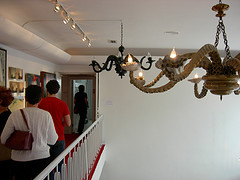
Adam Wallacavage’s chandeliers at Bridge
Then it was across the street to another fair: Bridge, held in the rooms of the Catalina Hotel. As I walked up the lobby staircase I was delighted to see three of Adam Wallcavage‘s octopus chandeliers (photo) looking particularly appropriate only a block from the ocean (although octopi don’t appear in these waters). These at least functioned as lights. I’ve been baffled by the endless supply of chandeliers as subject for both painting and sculpture during the past several years. They are not an obvious source of interest and I’m waiting for someone to explain the phenomenon.
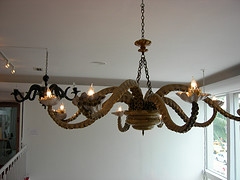
Wallacavage. What is it with chandeliers in contemporary art?
The first dealer I talked to at Bridge, Richard Lang, President of Trillium Press, said I was the second Philadelphian he’d seen since the fair opened (e. g. within fifteen minutes). When I queried whether it was Alex Baker, curator of contemporary art at PAFA (whom I’s seen at NADA yesterday), he confirmed my hunch, but we never caught up with each other.
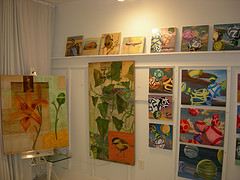
Pentimenti Gallery’s room
It’s fun to see art in hotel rooms; they are cosy and each is a separate space, as opposed to the open plan of the fairs. The rooms were emptied of furniture, but lodging nonetheless, most with private baths which were often hung with art. Burtonwood and Holmes at Gescheidle Gallery (Chicago) used the bathroom for an installation of their over-painted tabloid ads.
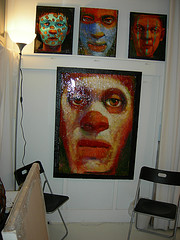
Frank Hyder’s and Tom Judd’s art at Projects Gallery’s room
The two Philadelphia galleries I visited, Projects and Pentimenti, were both pleased with the attendance. Christine Pfister, Director at Pentimenti, said they had turned people out at closing time last night. . While I was there, gallery artist, Kiki Gaffney, stopped by, but was gone before I could get her photo.
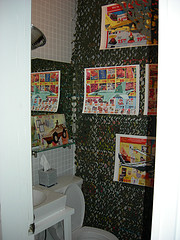
Burtonwood and Holmes bathroom display at Bridge.
I’d intended to go next door to Flow, a second fair, but never made it. Next year…
–artblog correspondent Andrea Kirsh is an art historian living in Philadelphia. See her Philadelphia Introductions essays on emerging artists at inliquid. Her most recent essay is on Stefan Abrams.


